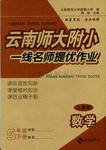题目内容
已知函数 的最小正周期为2π.
的最小正周期为2π.(I)求函数f(x)的对称轴方程;
(II)若
 ,求
,求 的值.
的值.
【答案】分析:(I)利用查两角和差的正弦、余弦公式化简函数f(x)的解析式为2cos(ωx+ ),根据函数的周期为 2π,求得ω=1,可得f(x)=2cos( x+
),根据函数的周期为 2π,求得ω=1,可得f(x)=2cos( x+ ).由x+
).由x+ =kπ+
=kπ+ ,k∈z,求得x的值,即得对称轴方程.
,k∈z,求得x的值,即得对称轴方程.
(II)由 ,可得 cos(θ+
,可得 cos(θ+ )=
)= ,再利用二倍角公式求得
,再利用二倍角公式求得 的值.
的值.
解答:解:(I)∵
=cosωxcos -sinωxsin
-sinωxsin +cosωxcos
+cosωxcos +sinωxsin
+sinωxsin -sinωx
-sinωx
= cosωx-sinωx=2cos(ωx+
cosωx-sinωx=2cos(ωx+ ).
).
函数 的最小正周期等于2π,
的最小正周期等于2π,
∴ =2π,∴ω=1,可得f(x)=2cos( x+
=2π,∴ω=1,可得f(x)=2cos( x+ ).
).
由x+ =kπ+
=kπ+ ,k∈z,求得对称轴方程为 x=kπ+
,k∈z,求得对称轴方程为 x=kπ+ ,k∈z.
,k∈z.
(II)由 ,可得 cos(θ+
,可得 cos(θ+ )=
)= ,
,
∴ =2
=2 -1=-
-1=- .
.
点评:本题主要考查本题主要考查两角和差的正弦、余弦公式的应用,二倍角公式,三角函数的周期性,属于中档题.
 ),根据函数的周期为 2π,求得ω=1,可得f(x)=2cos( x+
),根据函数的周期为 2π,求得ω=1,可得f(x)=2cos( x+ ).由x+
).由x+ =kπ+
=kπ+ ,k∈z,求得x的值,即得对称轴方程.
,k∈z,求得x的值,即得对称轴方程.(II)由
 ,可得 cos(θ+
,可得 cos(θ+ )=
)= ,再利用二倍角公式求得
,再利用二倍角公式求得 的值.
的值.解答:解:(I)∵

=cosωxcos
 -sinωxsin
-sinωxsin +cosωxcos
+cosωxcos +sinωxsin
+sinωxsin -sinωx
-sinωx =
 cosωx-sinωx=2cos(ωx+
cosωx-sinωx=2cos(ωx+ ).
).函数
 的最小正周期等于2π,
的最小正周期等于2π,∴
 =2π,∴ω=1,可得f(x)=2cos( x+
=2π,∴ω=1,可得f(x)=2cos( x+ ).
).由x+
 =kπ+
=kπ+ ,k∈z,求得对称轴方程为 x=kπ+
,k∈z,求得对称轴方程为 x=kπ+ ,k∈z.
,k∈z.(II)由
 ,可得 cos(θ+
,可得 cos(θ+ )=
)= ,
,∴
 =2
=2 -1=-
-1=- .
.点评:本题主要考查本题主要考查两角和差的正弦、余弦公式的应用,二倍角公式,三角函数的周期性,属于中档题.

练习册系列答案
 云南师大附小一线名师提优作业系列答案
云南师大附小一线名师提优作业系列答案 冲刺100分单元优化练考卷系列答案
冲刺100分单元优化练考卷系列答案
相关题目
 的最小正周期为
的最小正周期为 ,将其图象向左平移
,将其图象向左平移 个单位长度,所得图象关于
个单位长度,所得图象关于 轴对称,则
轴对称,则 的一个可能值是
( )
的一个可能值是
( ) B.
B. C.
C. D.
D.
 的最小正周期为π,其图象关于直线
的最小正周期为π,其图象关于直线 对称.
对称. 上的单调递增区间;
上的单调递增区间; 上只有一个实数解,求实数m的取值范围.
上只有一个实数解,求实数m的取值范围. 的最小正周期为
的最小正周期为 .
. 的值;
的值; 的最小正周期为
的最小正周期为
 的值;
的值;
 在
在
 上恒成立,求实数
上恒成立,求实数 的取值范围.
的取值范围.